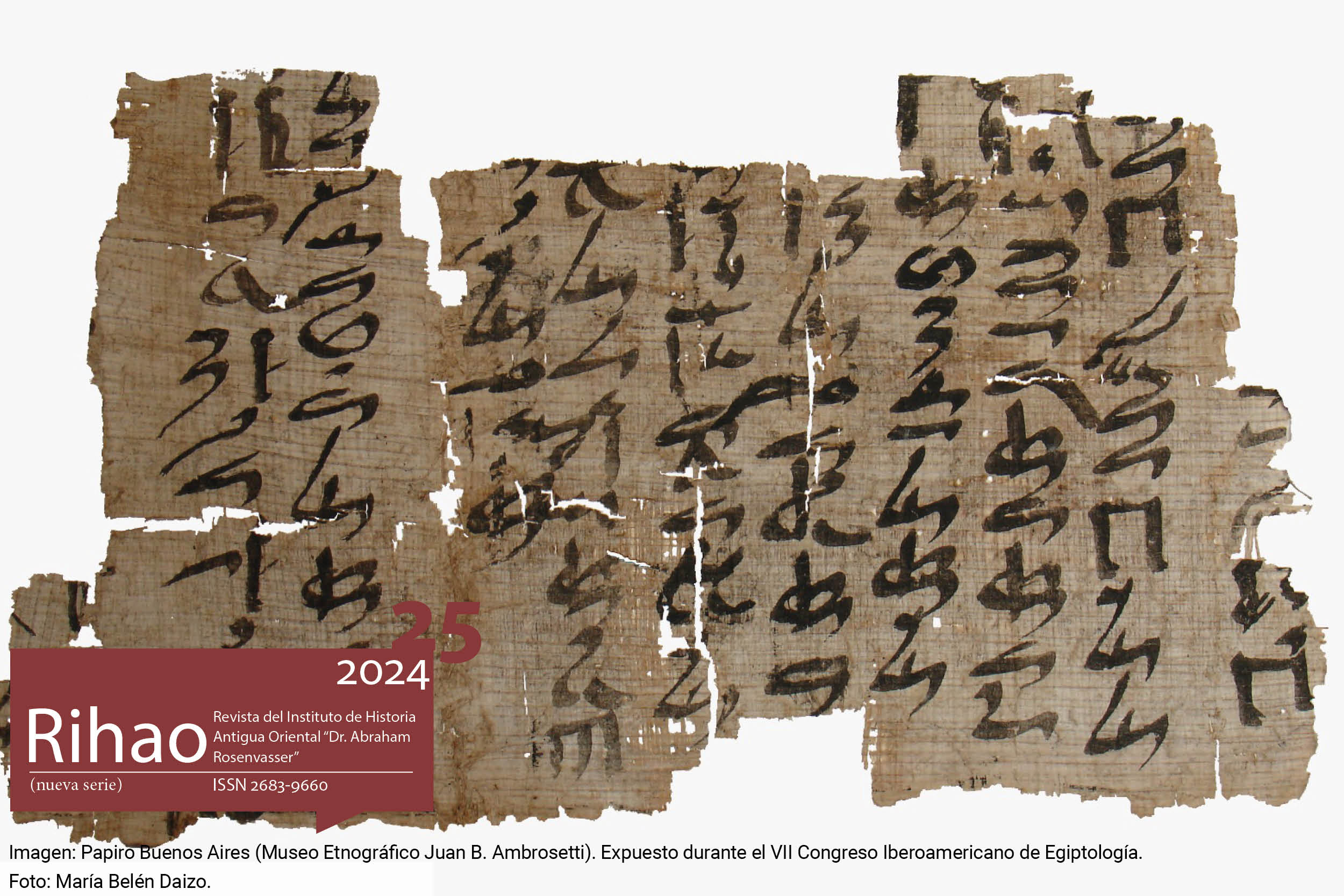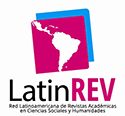Pastoralism and Circulation of Goods in the Sinai Peninsula during the Predynastic and Early Dynastic Periods
Abstract
In this paper we will analyze the role of mobile herders in the extraction and circulation of goods in the Sinai Peninsula during the Predynastic and Early Dynastic periods, within the general context of the relations between the Nile Valley and the southern Levant. We consider that the pastoral and caravanning practices of the Sinai populations may have been relevant to the establishment of early circulation routes in the region and the development of inter-regional interactions. Subsequently, the Egyptians may have used these same routes, and perhaps their agents, to control the supply of certain sumptuary goods as part of the process of change asso-ciated with the emergence of the State. In order to address this topic, and based on an interno-dal approach, we will identify the archaeological evidence for the traffic of goods in the Sinai and try to establish the possible corridors through which these goods would have circulated. Some considerations on the implications of caravanserai for the development of inter-regional interactions will also be proposed.Downloads
References
Abdel-Motelib, A., Bode, M., Hartmann, R., Hartung, U., Hauptmann, A. y Pfeiffer, K. (2012). Archaeometallurgical expeditions to the Sinai Peninsula and the Eastern Desert of Egypt (2006, 2008), en: Metalla 19 (1/2): 3-59.
Adams, R. B. (2003). External Inluences at Faynan During the Early Bronze Age: A Re-analysis of Building 1 at Barqa El-Hetiye, Jordan, en: Palestine Exploration Quarterly 135 (1): 6-21.
Anfinset, N. (2010). Metal, Nomads and Culture Contact. The Middle East and North Africa. Londres / Oakville: Equinox Publishing.
Aubet, M. E. (2007). Comercio y colonialismo en el Próximo Oriente Antiguo. Los antecedentes coloniales del III y II milenios a. C. Barcelona: Bellaterra.
Avner, U. (2002). Studies in the Material and Spiritual Culture of the Negev and Sinai Populations, During the 6th-3rd Millennia B.C. Tesis doctoral. Jerusalén: Hebrew University.
Avner, U. (2018). Protohistoric Developments of Religion and Cult in the Negev Desert, en: Tel Aviv 45 (1): 23-62.
Bar-Yosef, O., Belfer-Cohen, A., Goren, A. y Smith, P. (1977). The Nawamis near ’Ein Huderah (Eastern Sinai), en: Israel Exploration Journal 27 (2): 65-88.
Bar-Yosef, O., Belfer-Cohen, A., Goren, A., Hershkovitz, I., Ornit, I., Mienis, H. K. y Sass, B. (1986). Nawamis and Habitation Sites near Gebel Gunna, Southern Sinai, en: Israel Exploration Journal 36 (3): 121-167.
Beit-Arieh, I. (2003). Archaeology of Sinai: The Ophir Expedition. Tel Aviv: Tel Aviv University Yass Publications in Archaeology.
Ben-Yosef, E. (2018). Provenancing Egyptian metals: A methodological comment, en: Journal of Archaeological Science 96: 208-215.
Berenguer, J. (1994). Asentamientos, caravaneros y tráfico de larga distancia en el norte de Chile: el caso de Santa Bárbara, en: Albeck, M. E. (ed.), De costa a selva: intercambio y producción en los Andes Centro-Sur. Buenos Aires: Instituto Interdisciplinario Tilcara, Universidad de Buenos Aires, 17-50.
Braun, E. (2002). Egypt’s First Sojourn in Canaan, en: van den Brink, E. C. M. y Levy, T. E. (eds.), Egypt and the Levant. Interrelations from the 4th through the Early 3rd Millennium B.C.E. Londres / Nueva York: Leicester University Press, 173-189.
Campagno, M. (2010). Centros y periferias en las relaciones entre el valle del Nilo y el Levante meridional en torno del Bronce Antiguo (ca. 3700-2700 a.C.), en: Di Bennardis, C., D’Agostino, F., Silva Castillo, J. y Milevski, I. (eds.), Relaciones centro urbano-periferia en la Mesopotamia antigua y zonas contiguas del Cercano Oriente, Rivista Degli Studi Orientali 83: 189-214.
Campagno, M. (2018). Lógicas sociales en el Antiguo Egipto. Diez estudios. Buenos Aires: Editorial de la Facultad de Filosofía y Letras, Universidad de Buenos Aires.
Campagno, M., Gandulla, B. y Milevski, I. (eds.) (2022). Relaciones entre Egipto y Palestina en el IV milenio a.C. Modelos e interpretaciones. Buenos Aires: Miño y Dávila.
Chang, C. y Koster, H. A. (1986). Beyond Bones: Toward an Archaeology of Pastoralism, en: Advances in Archaeological Method and Theory 9 (1986): 97-148.
de Miroschedji, P., Sadeq, M., Faltings, D., Boulez, V., Naggiar-Moliner, L., Sykes, N. y Tengberg, M. (2001). Les fouilles de Tell es-Sakan (Gaza): nouvelles données sur les contacts égypto-cananéens aux IVe-IIIe millénaires, en: Paléorient 27 (2): 75-104.
Finkelstein, I. (1995). Living on the Fringe. The Archaeology and History of the Negev, Sinai and Neighbouring Regions in the Bronze and Iron Ages. Sheffield: Sheffield Academic Press.
Gophna, R. (1990). The Early Bronze I Settlement at ‘En Besor Oasis, en: Israel Exploration Journal 40: 1-11.
Greenberg, R. (2019). The Archaeology of the Bronze Age Levant. From Urban Origins to the Demise of City-States, 3700-1000 BCE. Cambridge: Cambridge University Press.
Hauptmann, A. (2007). The Archaeometallurgy of Copper. Evidence from Faynan, Jordan. Berlín: Springer.
Hoffmeier, J. H. y Moshier, S. O. (2013). “A Highway out of Egypt”: The Main Road from Egypt to Canaan, en: Förster, F. y Riemer, H. (eds.), Desert Road Archaeology in Ancient Egypt and Beyond. Colonia: Heinrich-Barth-Institut, 485-511.
Honeychurch, W. y Makarewicz, C. A. (2016). The Archaeology of Pastoral Nomadism, en: Annual Review of Anthropology 45 (1): 341-359.
Horwitz, L. K. (2019). Animal Offerings from the Nawamis Fields and Coeval Habitation Sites in Southern Sinai, en: Goldfus, H., Mayer, I., Gruber, I., Yonah, S. y Fabian, P. (eds.), Studies in Archaeology and Ancient Cultures in Honor of Isaac Gilead. Oxford: Archaeopress Archaeology, 131-145.
Horwitz, L. K. (2022). Dynamics of Early Bronze Age Faunal Exploitation in the Sinai Peninsula: Modes of Production, Commodity Production and Trade, en: Adams, M. J. y Roux, V. (eds.), Transitions during the Early Bronze Age in the Levant. Methodological Problems and Interpretative Perspectives. Münster: Zaphon, 265-284.
Khazanov, A. M. (1984). Nomads and the Outside World. Madison: The University of Wisconsin Press.
Levy, T. E. (2007). Journey to the Copper Age: Archaeology in the Holy Land. San Diego: San Diego Museum of Man.
Levy, T. E. y van den Brink, E. C. M. (2002). Interaction Models, Egypt and the Levantine Periphery, en: van den Brink, E. C. M. y Levy, T. E. (eds.), Egypt and the Levant. Interrelations from the 4th through the Early 3rd Millennium B.C.E. Londres / Nueva York: Leicester University Press, 3-39.
Milevski, I. (2016). Intercambio de productos en el Levante meridional durante el Bronce Antiguo. Una perspectiva marxista. Barcelona: Bellaterra.
Milevski, I., Campagno, M., Gandulla, B., Jaruf, P., Daizo, M. B., Czarnowicz, M., Ochał-Czarnowicz, A., Karmowski, J., Yegorov, D., Cohen-Sasson, E. y Yekutieli, Y. (2019). Tel Erani, Israel: Reporte de la campaña arqueológica de 2018 y sus antecedentes, en: Revista del Instituto de Historia Antigua Oriental “Dr. Abraham Rosenvasser” 20: 5-22. En línea: https://doi.org/10.34096/rihao.n20.7108. [Consultado: 28-10-2023].
Nielsen, A. E. (2006). Estudios internodales e interacción interregional en los Andes circumpuneños: teoría, método y ejemplos de aplicación, en: Lechtman, H. (ed.), Esferas de interacción prehistóricas y fronteras nacionales modernas: los Andes Sur centrales. Lima: Instituto de Estudios Peruanos - Institute of Andean Research, 29-62.
Nielsen, A. E. (2017). Actualidad y potencial de la arqueología internodal surandina, en: Estudios Atacameños 56: 299-317.
Oren, E. D. (1986). Early Bronze Age Settlement in Northern Sinai: A Model for Egypto-Canaanite Interconnections, en: de Miroschedji, P. (ed.), L’urbanisation de la Palestine à l’âge du Bronze ancien. Oxford: BAR International Series, 389-405.
Oren, E. D. y Gilead, I. (1981). Chalcolithic Sites in Northeastern Sinai, en: Tel Aviv 8 (1): 25-44.
Rademakers, F. W., Verly, G., Delvaux, L. y Degryse, P. (2018). Copper for the afterlife in Predynastic to Old Kingdom Egypt: Provenance characterization by chemical and lead isotope analysis (RMAH collection, Belgium), en: Journal of Archaeological Science 96: 175-190.
Renfrew, C. M. (1975). Trade as action at a distance: Questions of integration and communication, en: Sabloff, J. A. y Lamberg-Karlovsky, C. C. (eds.), Ancient Civilization and Trade. Albuquerque: University of New Mexico Press, 3-59.
Rosen, S. A. (2017). Revolutions in the Desert. The Rise of Mobile Pastoralism in the Negev and the Arid Zones of the Southern Levant. Londres / Nueva York: Routledge.
Tallet, P. (2010). Le roi Den et les Iountiou. Les Égyptiens au Sud-Sinaï sous la 1re dynastie, en: Archéo-Nil 20: 97-105.
van den Brink, E. C. M. y Levy, T. E. (eds.) (2002). Egypt and the Levant, Interrelations from the 4th through the Early 3rd Millennium B.C.E. Londres / Nueva York: Leicester University Press.
Yekutieli, Y. (2002). Settlement and Subsistence Patterns in North Sinai during the Fifth to Third Millennia BCE, en: van den Brink, E. C. M. y Levy, T. E. (eds.), Egypt and the Levant, Interrelations from the 4th through the Early 3rd Millennium B.C.E. Londres / Nueva York: Leicester University Press, 422-433.
Copyright (c) 2024 Ezequiel Cismondi

This work is licensed under a Creative Commons Attribution-NonCommercial 4.0 International License.





.jpg)








